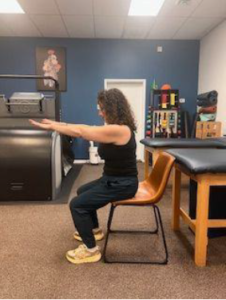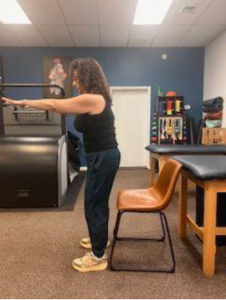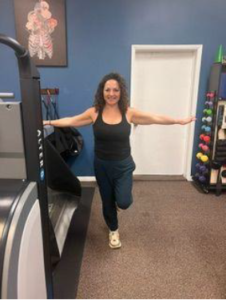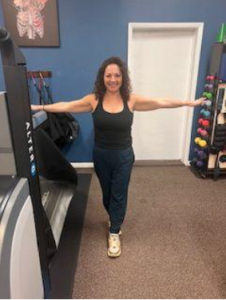A Physical Therapist’s Guide to Fall Prevention for Aging Adults

As a seasoned physical therapist, I’ve seen firsthand how crucial fall prevention is for seniors. Falls can have devastating consequences, often leading to fractures, hospitalizations, and a loss of independence. However, with the right strategies and interventions, we can significantly reduce the risk of falls and help folks maintain their mobility and quality of life.
Understanding the Risks of Falling
Aging brings about various changes in our bodies that can increase the likelihood of falls. Reduced muscle strength and flexibility, impaired balance and coordination, changes in vision and hearing, and certain medications are just a few factors that contribute to this risk. 30% of people 60 years and older fall each year. Understanding these factors is the first step in developing an effective fall prevention plan.
How Physical Therapists Assess Falls Risk
Every person is unique, which is why a personalized approach to fall prevention is essential. During our initial physical therapy assessments, we evaluate factors such as:
Balance and Gait: We observe how a person walks and maneuvers to identify abnormalities or signs of instability.
Strength and Flexibility: Muscle weakness or tightness can compromise stability and increase fall risk.
Home Environment: We assess the home for potential hazards like loose rugs, poor lighting, or clutter that could cause a fall.
Medication and Medical History Review: Certain medications can cause dizziness or affect balance, so we review prescriptions and consult with their physicians if necessary. We also review medical and surgical history because certain conditions can affect musculoskeletal and neurological function.
Assessing Your Own Fall Risk
There are some questions to ask yourself to assess yourself to understand if you are at risk of falling:
Have I fallen before? If you have fallen before, there is a greater likelihood that you will fall again.
Can I stand safely on one foot? If you aren’t able to stand on one foot without moving your arms much, you are more likely to fall.
What is my home environment like? If you live alone, there is a greater likelihood of falls. Also, potential hazards like loose rugs, poor lighting, clutter, and pets can potentially put you at risk of falling.
Do I have any trouble seeing? Changes in vision have been shown to contribute to falling.
Medication Review: There is a greater risks of falls if you take a psychoactive drug.
Developing a Comprehensive Plan
Fall prevention plans may include:


1. Exercise Programs
Physical activity is one of the most effective ways to improve strength, balance, and flexibility. This includes exercises that focus on:
Strength Training: Using resistance bands or weights to build muscle, especially in the legs and core.
Balance Exercises: Such as standing on one leg, heel-to-toe walking, or Tai Chi, to improve stability and coordination.
Some examples of exercises include:
Sit to Stand without using hands for support. Perform 3 sets of 10.
Balance on one foot. Try 10 repetitions of this on each leg, holding for 10 seconds. Do this by your kitchen counter or something sturdy so you can grab it if necessary.
Tandem Balance
 Stand with one foot in front of the other. Hold for 10 seconds and repeat 5 times on each side. Also, perform this near a sturdy surface in can you need to hold on.
Stand with one foot in front of the other. Hold for 10 seconds and repeat 5 times on each side. Also, perform this near a sturdy surface in can you need to hold on.
Consistency (performing these exercises 3-5 times per week) and proper technique are important to maximize the benefits of these exercises.
2. Education and Awareness
Many falls are preventable with simple lifestyle adjustments and awareness.
Footwear: Try to wear proper footwear that provides stability and support. If you wear slippers around the house, make sure that there are good treads on them.
Home Modifications: Consider installing grab bars in bathrooms, improving lighting, and removing tripping hazards.
Fall Prevention Aids: Discuss the use of canes, walkers, or other assistive devices if needed with your physical therapist or physician.
3. Regular Follow-Up and Monitoring
Make sure you attend your regular primary care physician visits in order to maintain general health. Make sure you address any balance concerns at those visits and schedule a physical therapy evaluation if you suspect any concerns.
Benefits of Fall Prevention
In conclusion, fall prevention is not just about reducing risks; it’s about preserving independence and enhancing quality of life. Through exercise and support from healthcare professionals such as physical therapists, you can help prevent falls.
Contributed by
 Dr. Michelle Friedman, PT, DPT
Dr. Michelle Friedman, PT, DPT
Dr. Michelle is the owner of Atlantic Physical Therapy. She graduated Drexel University’s Doctor of Physical Therapy program in 2007 with a concentration in orthopedics and holds a Bachelor of Science degree from The George Washington University. She founded Atlantic Physical Therapy in 2015 with a mission to provide high-quality holistic care.
Michelle has experience in inpatient settings, outpatient settings, and clinical instruction. She holds certifications in the Graston Technique, the Aligned Flow Yoga Method, and the CAPP certification in pelvic floor physical therapy through the Women’s Health Section of the American Physical Therapy Association.
She is interested in integrating a holistic approach to rehabilitating her patients that includes yoga, dietary, and lifestyle changes.
Citations:
Bongue, B., Dupré, C., Beauchet, O., Rossat, A., Fantino, B., & Colvez, A. (2011). A screening tool with five risk factors was developed for fall-risk prediction in community-dwelling elderly.
Journal of Clinical Epidemiology, 64(10), 1152-1160. https://doi.org/10.1016/j.jclinepi.2010.12.014
Montero-Odasso MM, Kamkar N, Pieruccini-Faria F, et al. Evaluation of Clinical Practice Guidelines on Fall Prevention and Management for Older Adults: A Systematic Review.
JAMA Netw Open. 2021;4(12):e2138911. doi:10.1001/jamanetw
Comments
Leave a Comment

I believe that shuffling is another aspect. If we don’t pick our feet up high enough while walking, we are more likely to catch a toe on something, or just lose our balance.
Great point! And that is why loose throw rugs can be a problem. Thank you for reading the blog and I hope you have a wonderful day.